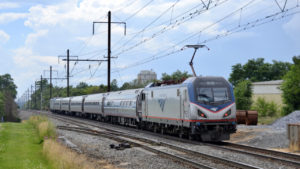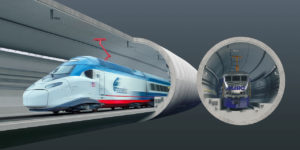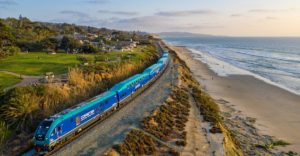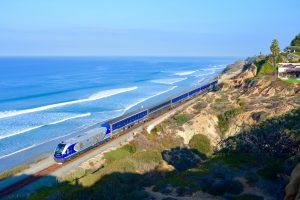FRA; TxDOT outline south Texas HSR options
Written by Jenifer Nunez, assistant editorThe Federal Railroad Administration (FRA) and the Texas Department of Transportation (TxDOT) have released 10 service and route options for new and improved conventional and high-speed passenger rail service connecting Oklahoma City, Okla., Fort Worth, Austin, San Antonio and South Texas.
The options are evaluated in a Draft Environmental Impact Statement (DEIS).
“This corridor is home to major financial, energy and education centers that people rely on every day,” said U.S. Transportation Secretary Anthony Foxx. “Providing efficient, more reliable and faster higher-speed passenger rail options to move between cities is crucial for the economy and the population to thrive. I encourage those along the I-35 corridor to participate in the comment and public hearing opportunities so that they are able to learn more and share their input.”
During a 45-day public comment period, FRA and TxDOT will take comments on the 10 options and the seven recommended preferred options that the two agencies identified. Four public hearings will also be held to give residents a chance to learn about the Texas-Oklahoma Passenger Rail Study, understand how their communities may be affected and provide comments.
Current passenger rail service along the I-35 corridor includes three intercity Amtrak services from Oklahoma City to Fort Worth (Heartland Flyer), Fort Worth to San Antonio (Texas Eagle) and Los Angeles to New Orleans through San Antonio (Sunset Limited).
The DEIS addresses the relationships of the major regional markets within the Texas-Oklahoma Passenger Rail Program corridor in three geographic sections and preferred alternatives are recommended for each geographic section separately. The three sections of study are: Northern Section – Edmond, Okla., to Dallas and Fort Worth, Texas; Central Section – Dallas and Fort Worth to San Antonio and Southern Section – San Antonio to south Texas (Corpus Christi, Brownsville, Laredo and the Rio Grande Valley).
More than 10 million people currently live along the 850-mile corridor, which is expected to grow by 39 percent in Texas and 25 percent in Oklahoma City by 2035. As a state with some of the largest metropolitan areas in the nation, spread out over hundreds of miles, Texas is now in high demand for alternative modes of transportation. Since the majority of the state’s population is centered in the eastern half of state, along I-35 stretching into Oklahoma City, the highways have experienced increased congestion.
“More passenger rail service will help relieve already congested roads along the I-35 corridor and help this region manage the significant population growth on the way,” said FRA Administrator Sarah Feinberg. “I encourage everyone to provide feedback on the 10 options that FRA and the TxDOT have presented to continue moving this effort forward.”
The Final EIS is projected to be released by early 2017.





